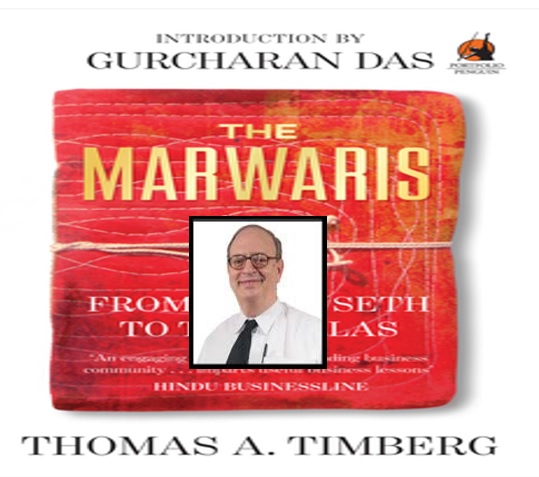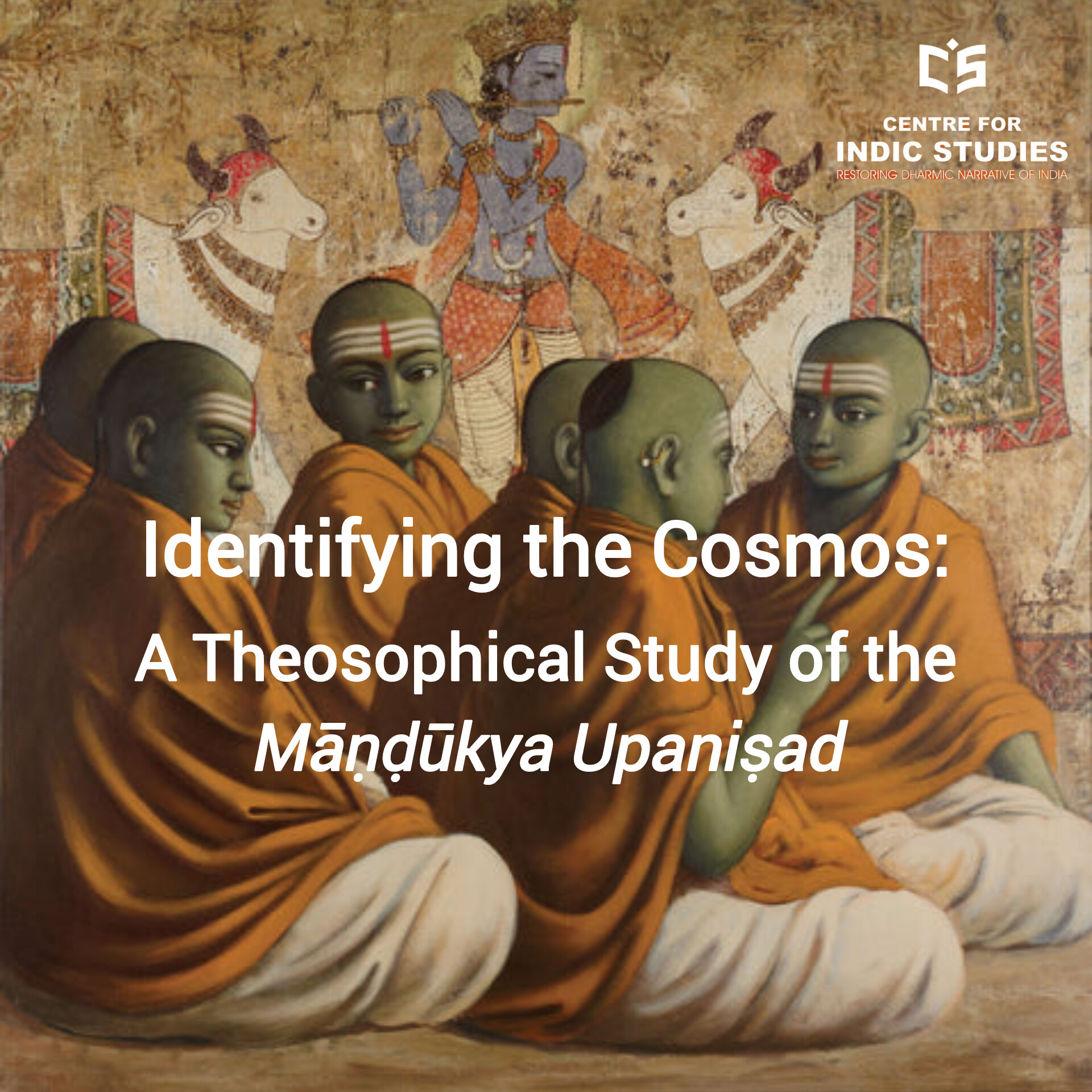- Visitor:363
- Published on: 2024-08-29 07:02 pm
Book Review of The Marwaris: From Jagat Seth to the Birlas

Author: Thomas A. Timberg
Edited by: Gurcharan Das
Publication: Penguin
Random House, India
The book titled The Marwaris from Jagat Seth to The Birlas authored by Thomas A. Timberg is very informative to the new generation businessmen in India as well. The book is edited by Gurcharan Das. It contains five chapters, narrating to us how the Marwari Community emerged very skilled in trading and industrial ventures. The book tells us how the merchants of the Marwari community progressed, how they started businesses and run them, what struggle they had undergone, and which strategies they used to promote their businesses.
The book not only tells about the business related aspects of the businessmen of Marwari community, but also tells about their social, political and cultural engagements as well. The details also include the contribution of some Marwari businessmen in the freedom movements of the country. It depicts how the migrant merchants sometimes financed the nationalist movements in their native places.
Marwar (also called the Jodhpur region) is a region of the western Rajasthan. It lies partly in the Thar Desert. The Sanskrit word 'maru' stands for 'desert' whereas, in Rajasthani languages which stemmed from the Sanskrit, 'wad' means 'a protected area'.
The book exhibits how the Marwari
merchants maintained a very good relation with various kings/nawabs, even lending money to them. For examples, some Bikaneri Marwari families became
prominent as bankers to the Nizams of Hyderabad, chief among them being the
pittys who arrived in Hyderabad in 1817. The founder of the Tarachand
Ghanshyamdas firm was Bhagoti Ram (Bhagwati Ram) Poddar. Bhagoti Ram Poddar was
a banker to Nawab of Fatehpur, Rulers of Bikaner, Rulers of Punjab and the Pindari
Nawabs.
This book contains the
details on how Marwari community people co-operate with one another in their businesses. It includes very interesting information on Marwari systems of accounts by keeping a recording method called parta. In a nutshell, parta indicates the "return to
pocket". Parta is a system of establishing return on investments based on cost management. It is the financial performance monitoring system for any
organization which indicates profit/loss on daily basis. In the
late '80s, Aditya Birla conveyed a conference of his top executives from all
over the world to discuss the parta, and compared it with other systems. By the
end of the conference, he realized that through it the group was saving a very
big amount.
The book also includes projections of how Ghanshyamdas Birla, Ramkrishna Dalmia, Jagat Seth Fatehchand, Ganga Prasad Birla, Anandilal Poddar, Seth Hukumchand, Dr. Ramaprasad Goenka, Kumar Mangalam Birla, Rakesh Jhunjhunwala etc. developed their businesses. It contains the details of the generation-wise family members of some very big business groups. The book gives the older of information of even the 18th century.
The details on the typical
structure of the Marwari firms of older time have also been given. They took very much
care for succession planning too. They did diversification in business. Most of
the Marwari business groups are managed by the families. The challenges of
family business have also been described very well.
Many schools, hospitals, messes etc. have been built by some of the Marwari businessmen-industrialists in the spirit of social service. There were two charitable messes run by Marwari Communities in Kolkata in the early twentieth century. These messes used to provide accommodation and food. These messes were even informal training schools and also had a place for networking opportunities to newly arrived Marwari businessmen. They sometimes used even 'case method' in their discussions at mess and that was very helpful and interesting to them in gaining important information and knowledge related to various business.
Here, the conversations
between some family members of the big business group have also been mentioned
which provide us an idea on the ideology on various aspects of businesses they
had and also give us insight on how they used to take decisions for the expansion
of the existing business, for the establishment of new businesses, and for other business
strategies.
The incredible
achievements of the Marwaris have been credited to their extraordinary
risk-taking ability. Marwari community took 'wise' risk in setting up
businesses and in their expansion. The community relocated to various parts
of India from the Marwad area of Rajasthan. Economic activities by Marwaris
were originally focused in their homeland Rajasthan. Later, one group of
Marwaris moved to east with the Mughals and established business headquarters
along the Ganga-Jamuna Valley along with Bengal. The Marwari communities
establish a huge commercial presence especially in eastern and central India.
Some of the Marwari
community businessmen took initiatives and contributed in bringing some changes
in business, society and culture. Kumar Mangalam Birla of the Birla Group took
decisions related to changes in human resource systems and account keeping
systems. In Maheshwari community, the Birlas spearheaded the reform movement on
issues such as foreign travel, education for women, and the relaxation of
restrictions on marriage with members of certain groups. Marwari patrons and
writers have contributed greatly for Hindi Literature. Seth
Hukumchand was a great lover of Hindi, he served as a president of Madhya
Bharat Hindi Sahitya Samiti.
Marwari Community, having a
great sense of trading, also contributed in the manufacturing sector and became very
successful in that also. The Marwaris controlled much of India's inland trade
by the end of the First World War. Gradually, they returned to industry
after the war, and by 1970s they controlled much of the nation's private
industrial assets and, by 2011, the Marwaris accounted for a quarter of the
Indians on the Forbes list of billionaires. Shekhawati Marwaris became the
primary Banias for foreign firms, controlling their supply chains, and played a
key role in the development of the stock, commodity and other speculative
markets. It was these roles which enabled them to become industrial
entrepreneurs especially after the World War I and more so after the independence. Other Shekhawati Marwaris were involved in the development of
Jharia coalfields in Bengal.
Marwaris availed a great prestige in the market and based on that many big trading-transactions happened. The community wisely invested money, and used money with a great care. The firm Tarachand Ghanshyam Das was very successful and became a great model among the trading community. Many of the Marwaris started their business at their young age. At the age of 25, Mr. G.D. Birla sets up a jute mill, the Birla Jute Manufacturing Co. Ltd., in Calcutta. The Marwadi merchants-industrialists did mergers and acquisitions too. For example, Ramkrishna Dalmia and his brother Jaidayal Dalmia established Dalmia Bharat Limited (DBL). In the 1930s, the group merged with the businesses of the Sahu Jain family to form the Dalmia-Jain Group.
Even kings were very impressed by Marwari merchants. Seth Fateh Chand was given a title ‘Jagat Seth’ by the Mughal emperor Muhammad Shah in 1723. After that, the entire family of Fateh Chand came to be known as Jagat Seth Family. Jagat Seth means the “Banker of the World”. Jagat Seth Fateh Chand financed both the local rulers and foreign trading companies and was the state treasurer, receiving and allocating public revenues between 1718 to 1730. The East India Company took an average credit of Rs. 4 lakh per year from the Jagat Seth's firm. Some of the Marwari merchants initially worked as an employee and later they started their own firm. For example, Anandilal Poddar served as a clerk in one of the firms and he soon started his own brokerage firm. It is to be noted that not all Marwari firms are resident Indian firms. The textile group of Shri Prakash Lohia is in Thailand while the steel Mittals and Bagris are in London. Even the India-based groups often have a considerable global presence. Reading this book provides inspiration, information and knowledge about the industry. Therefore, the book is very informative and interesting, and highly recommended, especially for entrepreneurs and businessmen.
- 181 min read
- 6
- 0










